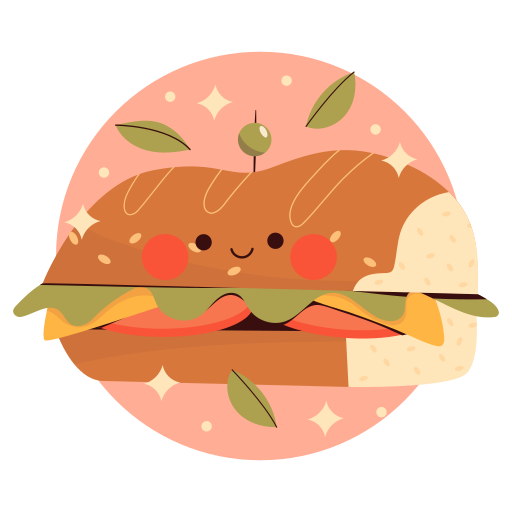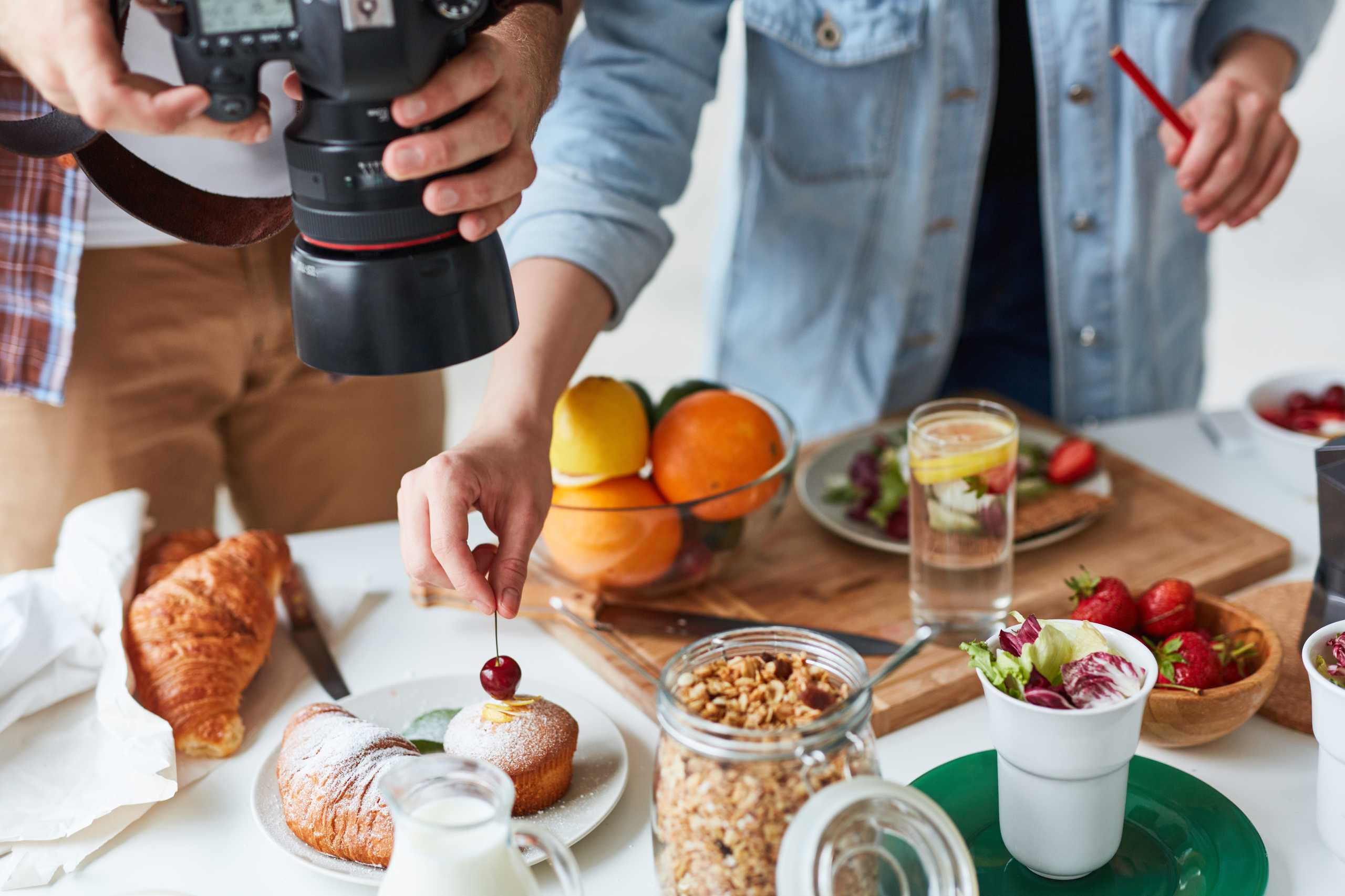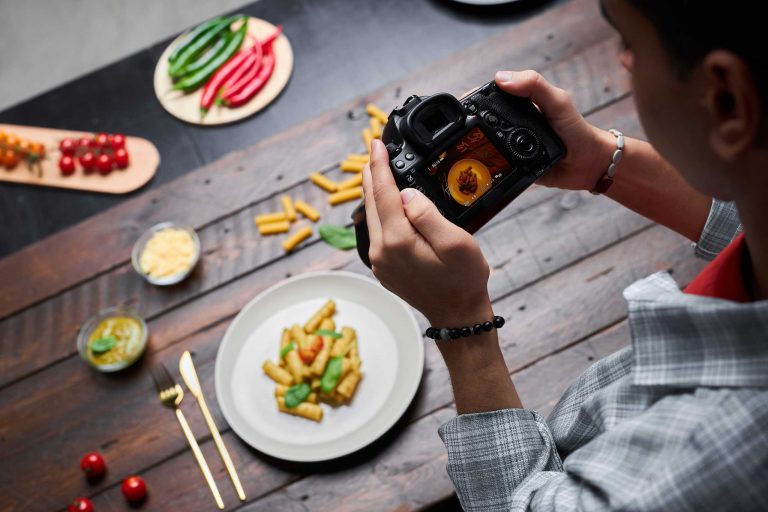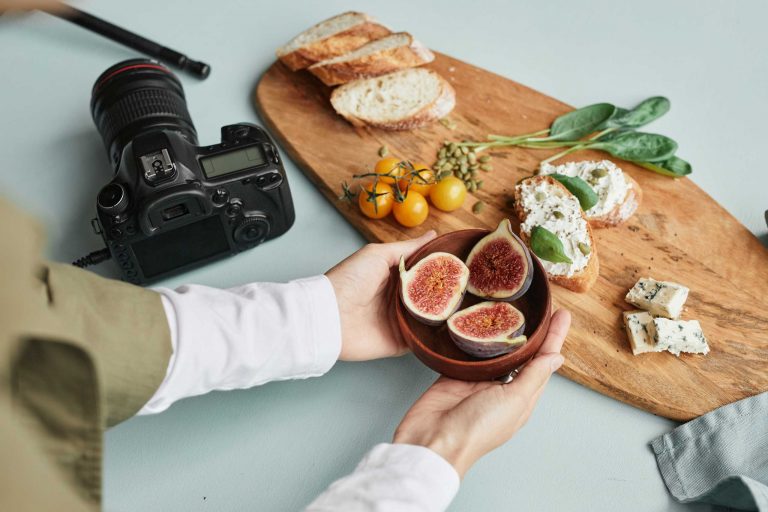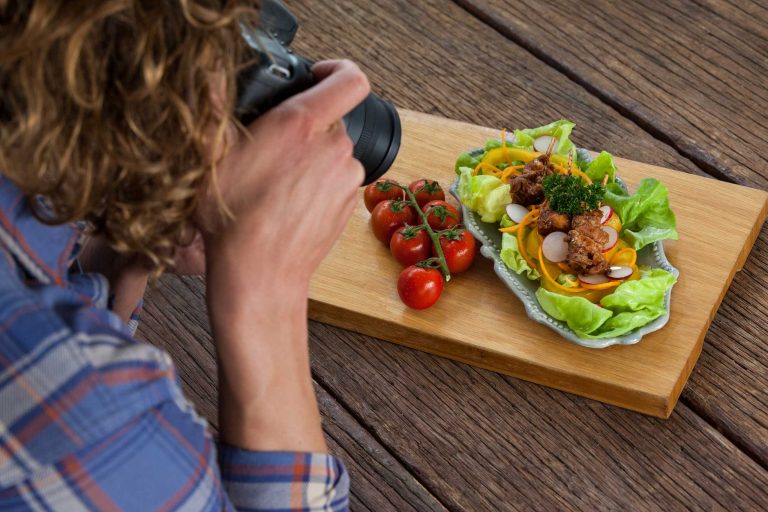Great lighting is essential, but composition is what truly draws the viewer’s eye and tells a story in your food photography. Thoughtful composition turns a simple plate into an engaging visual experience, guiding the audience through textures, colors, and shapes.
Here are some fundamental composition techniques to keep in mind:
- Rule of Thirds:
Imagine dividing your frame into a 3×3 grid. Positioning the main subject off-center—along these lines or their intersections—creates a balanced and dynamic image. - Leading Lines:
Use natural lines in your scene (like utensils, table edges, or even steam rising from hot food) to guide the viewer’s gaze toward the focal point. - Framing:
Surround your subject with elements like herbs, napkins, or kitchen tools to add context and depth, creating a ‘frame within a frame’ that enhances focus. - Negative Space:
Sometimes, empty space around your subject can make it stand out more. Minimalist photos with clean backgrounds help emphasize the food. - Depth and Layers:
Including foreground, midground, and background elements adds dimensionality. For example, a blurry fork in the foreground can create a sense of intimacy.
Tips to elevate your composition:
- Choose Your Background Carefully:
Textures and colors should complement, not compete with, your dish. Natural wood, marble, or simple fabric often work well. - Balance Colors:
Incorporate complementary colors to make your image vibrant but harmonious. For instance, red tomatoes pop against green basil. - Vary Angles:
Don’t stick to just one angle. Shooting from above (flat-lay), at 45 degrees, or eye-level each conveys a different mood and reveals different details. - Keep It Natural:
Arrange food and props as if someone is about to eat. Authenticity resonates more than overly staged shots.
A well-composed food photo invites the viewer to not only see but almost taste the dish. Composition, combined with lighting, styling, and editing, creates the full sensory experience.
Keep experimenting with these techniques. Over time, you’ll develop your unique style and instinct for what makes a food photo truly captivating.
